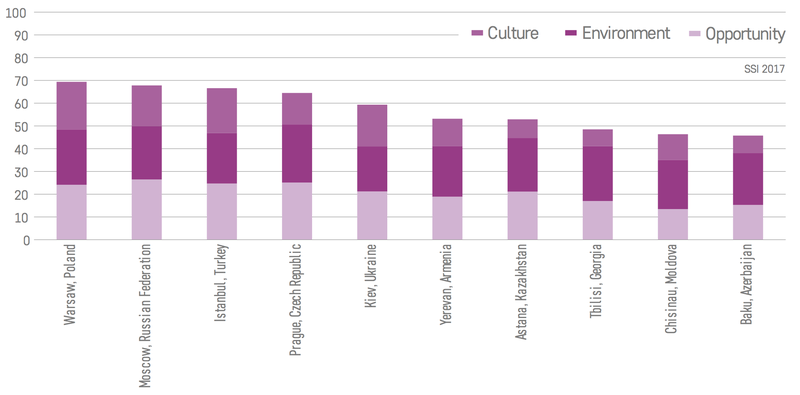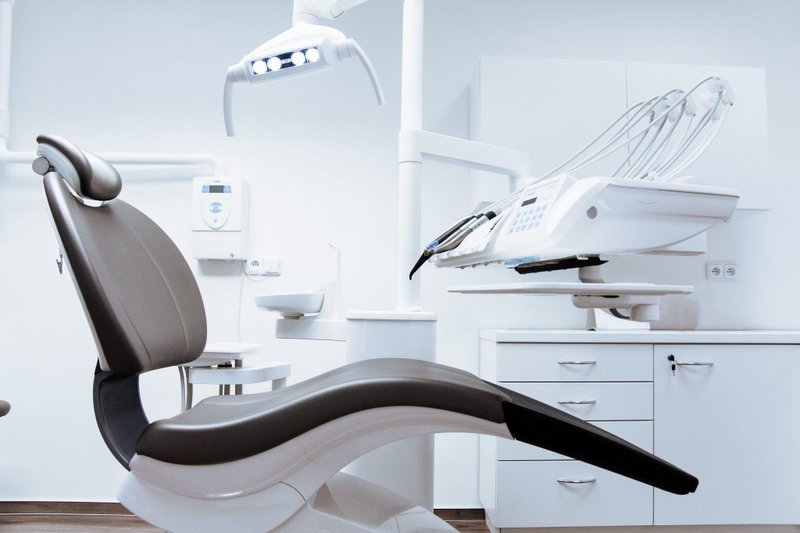
CEE • OTHER
Tiffany Obser
JUNE 23, 2017
On the quest to source the best entrepreneurs was akin to cutting a cross-section through each country— witnessing the brightest and most determined minds, you come to understand the challenges with which the society is grappling and learn what is driving and motivating entrepreneurs.
On the quest to source the best entrepreneurs was akin to cutting a cross-section through each country— witnessing the brightest and most determined minds, you come to understand the challenges with which the society is grappling and learn what is driving and motivating entrepreneurs.
It also reveals how well- equipped entrepreneurs are to execute and embrace the critical thinking and problem solving that are integral to navigating to success. The major themes that emerged over the course of the year in CEE were:

Every year, CEE produces 1.2 million graduates, many of them with working proficiency in altogether 40 languages, which they use on a daily basis.
80% of the Lithuanian population, 71% in Poland and 85% in Serbia are willing to try new payment methods.
The region is at the forefront of antivirus protection technology. Avast and AVG, for instance, account for roughly 25% of the global market share.
In the OECD’s rankings, Poland, Slovenia, Czech Republic and Latvia are all in the top 30 countries with the best scores in mathematics.
The first electronic computer, first digital watch, automatic steam espresso coffee machine, the jet engine, insulin, CD-ROM and many other inventions have their origins in CEE.
Three cities in the global SSI rank among the top 10 and none in the bottom 10! Central and Eastern European ecosystems also have the highest of all regional averages.


Today robots are affectionately called “bots.” Powered by artificial intelligence, bots allow users to perform daily tasks such as checking the weather or booking flights via a messaging platform. We’re heralding a new era of conversational interface.
Where the computer screen and mouse have been the protocol for accessing computing power, chat bots make computing conversational. The rapid advances in AI converted what was once a Watson pipedream into commonplace tech. We are indeed approaching a screen-less and mouse-less future of computing.
Mid-2016 we began to see the first wave of startups in CEE harnessing the potential of artificial intelligence in the form of “bots.” Since then, the news headlines have been buzzing. Microsoft CEO Satya Nadella declared “Bots are the new apps”, Facebook will be launching a “bot store” to supersede the app store marketplace, and the Economist is calling bots “the next frontier.”
Bots promise to change the way we access computing, and the interface also opens a new realm of possibilities for the way companies engage with customers and the types of tasks that can be performed. Their likeness to messaging apps lower the bar to access customers, demonstrating some of the highest engagement and growth.
In some ways, bots have manifest in the way we anticipated robots would: to accelerate production and replicate human labor. With their knack for quickly completing repetitive tasks, bots fulfill a niche—optimizing the workforce and eliminating redundant work. Artificial Employee from Russia does exactly this with their mission to “free employees from routine tasks,” ostensibly derived from tedious excel work.
Bots have also materialized with incredible ingenuity, creating unforeseen utility. Talkbank.io from Moscow is a chatbot for a virtual bank that eliminates the need for a physical banking branch.
Mobile phone users can manage their money with a bot to pay, save, and transfer simply by opening a messaging app. Barriers to banking are minimized encouraging more accessible and effective financial management without the laborious process of logging into banking portals or visiting physical sites. The ramifications are tremendous in emerging markets where large portions of the population are unbanked and the costs of servicing low-income customers with traditional banking services is too onerous.

While chatbots might one day make screens obsolete, entrepreneurs are also wrestling with how to laminate physical and digital realms. CEE startups prove that material innovation is critical not only in the composition of molecular structure, but in how materials are conceived as a conduit between realms via screens, physical armatures, and even scanners.
Abyss Glass Group from Warsaw has produced an AI mirror that not only displays information with an embedded screen; it is also highly intelligent taking cues and responding. In the gym the mirrors, sensors can post your vital statistics, and in the bathroom it can correct the way you brush your teeth. Intelligent sensors can also detect feelings; when people look at mirrors, they reveal feelings and expressions and this data can be coded and mined for consumer insights.
The Digital Showroom by Texel also interlaces the physical and digital with their highly precise portable scanner. They pitched their hardware with the premise that they could scan your body and immediately after that print a 3D model figurine. Now, six months later, they’ve made it a shopping mall attraction, where customers can get scanned and receive clothing suggestions tailored to their body type.
The retailers build digital catalogs of body types to better approximate sizing and inventory, but the real innovation comes from Digital Showroom’s ability to superimpose these 3D body scans onto animations. By mapping our bodies with millions of data points, they can project a 3D scan onto an Olympian doing backflips or the main character of a movie.

Outside of the fantastic world of screens and bots, CEE startups are also grappling with critical problems like pollution, energy shortages, and drought. Entrepreneurs are reacting to these large- scale issues typically reserved for government budgets.
BioSens from Ukraine was built on the premise that food safety is a critical issue costing billions annually. BioSens eliminates laboratories and personnel, providing rapid diagnostics for identifying and measuring aflatoxin B1 and aflatoxin A1 at the source. They develop sensors provide on-sight results in 20 minutes as opposed to seven days in a lab.
MindPax from the Czech Republic is tackling a global healthcare predicament. Bipolar and schizophrenic disorder plague individuals the world over, afflicting 2% of the population. Both diseases are challenging to treat and result in hospitalization with unsuccessful treatment. The results are burdensome and costly. Mindpax has designed a Fitbit for psychiatry to empower patients and their doctors so they can manage their diagnosis and prevent relapses.
If startups are a prism for understanding the larger societal leanings in CEE, it is clear that impact of newfound technologies will touch on all facets of life from chores and recreation to medical care and regulation.
The CEE region countries are varied in their sizes and maturity of the entrepreneurship scenes, but one thing is consistent: the strength of the entrepreneurs. Countries like Russia, Ukraine, Poland, and the Czech Republic consistently demonstrate the prowess of CEE talents. Even the latecomers, such as Georgia and Azerbaijan, boast strong engineers typical for the former Soviet Republics.
Ukraine is a paradise for hardware products. This country has a strong tech educational system and very affordable prices to build, test and produce hardware prototypes.
Georgia always impresses us for its progressive policies. Their government jumped from the lowest on the list to one of the best performers for ease of doing business by, for example, successfully, erradicating corruption just within a couple of years.
Armenia’s TUMO Center is something that we always provide as an example of diversifying the fossil dependent economies. It’s a free of charge digital media learning center for 12-18-year-olds in Yerevan to learn from media professionals and explore the intersection of technology and art. Armenia has one of the strongest ties with its diaspora.
Russia is the most diverse startup ecosystem, filled to the brim with serial entrepreneurs building globally competing startups, and coming not only from Moscow! Poland is topping the list of the most aggressively growing startup scene. Its huge talent base is a result of strong tech education in universities, which started at the beginning of the 2000s.
Azerbaijan has one of the most advanced infrastructures in the region. Did you know that every single village there has fiber optics internet? After the worldwide success of SocialBakers, GoodData, and Avast, there was a boom of tech startups in the Czech Republic, which shifted the mindset of young entrepreneurs to go global from day one.
Kazakhstan has the biggest influence of the government in the development of the entrepreneurship ecosystem in the region: various grants, acceleration programs and funds are sponsored or supported by quasi governmental organizations like NATD, Atameken and DAMU. Besides organizing Expo2017 in Astana, the president has personally indicated that the country is moving toward a new type of economy with a broad use of IT solutions and digitalization of most industries.
With one of the fastest internet connections in Europe, high level of electronic communications infrastructure and alignment with the EU legal framework, Moldova is a testing ground for new mobile communications technologies. For instance, 4G technology was implemented in Moldova in 2012. After traveling to 10 countries and screening 1000+ applications, we came out with a list of one sentence statements that describes one of the most remarkable feature of each country. Those facts were both shocking and inspiring for us during our work ventures and life adventures.